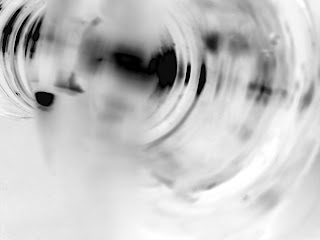The statement "a picture is worth a thousand words" has an obscure derivation, but people have pinpointed a moment when the phrase saw print; Wikipedia offers a similar derivation to the early 1910s and an association with advertising.
I like the idea that a character created by Ivan Turgenev germinated the idea of images having more content than words, as found in the 1862 novel Fathers and Sons. Turgenev and Henry James were good friends.
 |
| Inverted pint glass (from stock.xchng) |
I think that people are comforted by film images because people tend to absorb visual information faster than written words. Visual images don't have to be symbolic, whereas writing requires decoding (the ability to read a specific language through symbols).
Yet some images are not easy to interpret, even the nonsymbolic kind. (See the caption on the image to the right.)
Besides, a film image is not the same as an image that people normally see during the day just by walking around and living. Film images are stylized (even for those films that claim to be documentary in approach). Cameras give the illusion of objectivity because they mimic human sight, but mimicry is still a form of mimesis (representation or imitation).
 |
| from stock.xchng |
Human attention (even if programmed into a computerized alarm system) is what makes that footage significant--what human attention considers worthy of being recorded and reviewed. That judgment of significance is what makes any particular sequence of footage (or even of a single still) worthwhile of being described in words. Once an image requires judgment, the possibility of mimesis arises.
So--I like pictures and words: together, alone, whatever.
No comments:
Post a Comment